

Years ago I was given an old H&R 9-shot revolver by my father. The timing was perhaps off a little bit, and sometimes the cartridges wouldn't fire. The cylinder had a dent in one edge, too. So, I traded it away at a gun store for some .380 ammo. That was the only revolver I ever owned until just recently. I've had many models, makes and calibers of semi-auto pistols, but never another revolver.
My H&R 676 came up for sale at the Tennesse Gun Owners Forums in July of 2009, and I decided to buy it. I've taken it apart, and cleaned and oiled it. There was a bunch of gunk under the grip (stock). I've taken it to the range to see how it shoots. Now I'm going to share some photos and remarks about it. I hope this web page will be of interest and value to another person who has come into a nice old H&R revolver. Here's a photo of my gun...

H&R stands for Harrington and Richardson, Incorporated. There is quite a bit of history behind the company, which really no longer exists as it once did. H&R was the successor to Wesson (of Smith and Wesson fame) & Harrington, and H&R Inc. made guns from from 1871 until January 24, 1986.

Some of the H&R revolvers have this logo stamped into dark plastic grips.

As you can see, H&R Inc. made this revolver in Gardner, Massachusetts, USA.
In 1871 Gilbert H. Harrington invented the top-breaking, shell-ejecting revolver. To produce his invention, Harrington teamed up with William A. Richardson. Harrington & Richardson's reputation for excellence became established so quickly, that in 1880 the firm was named sole North American licensee for England's Anson & Deely double-barrel hammerless shotgun. H&R's success led it to break ground for a state-of-the-art factory in Worcester, Massachusetts, in 1893. The company claimed to have begun in 1871. But it was incorporated in 1875.

You will notice on the map that Gardner is a few miles NW of Worcester.
Frank Wesson (one of the famous Wesson brothers) started his own firearms manufacturing firm in 1859, sharing an early patent with Nathan Harrington. Frank shared a brief partnership with Nathan's nephew Gilbert Harrington, as Wesson and Harrington.
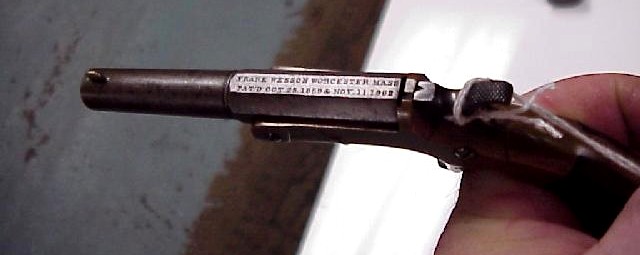
In 1875 Harrington and another former Wesson employee, William Augustus Richardson formed the new H&R company. In 1888 the firm was incorporated as The Harrington & Richardson Arms Company. The capital was $75,000. Harrington was president, Richardson was treasurer, and George F. Brooks was secretary. After the deaths of Harrington and Richardson, Brooks became the manager. Both Richardson and Harrington died in 1897.
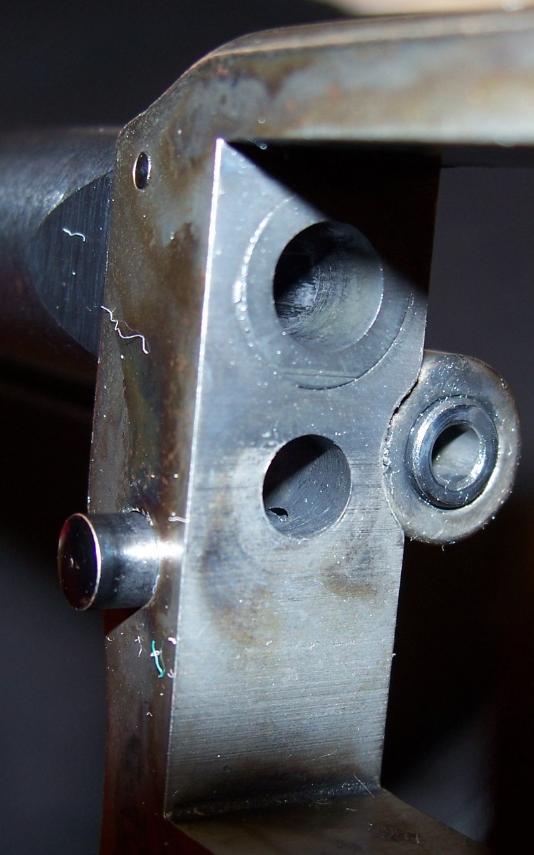
The top hole is the barrel. The lower hole is for the cylinder pin.
The hole on the right side houses the spring-loaded ejector rod.
The metal button on the left must be pushed in order to remove, or re-insert, the cylinder pin.
In 1894 the company had opened a new facility on Park Avenue in Worcester, Massachusetts to respond to customer demand for their products. H&R was enjoying such success that the factory was expanded again after only a few years.

The firing pin is peeking out the hole in the top of the "recoil shield" part of the frame. The hole in the center
is for the tip of the cylinder pin, on which the cylinder spins. The long vertical slot is where the pawl (or hand) emerges
to engage the ratchet at the center of the cylinder, to make it rotate to the next chamber in the cylinder.
To the left of the recoil shield is a "swing-out." This can be opened to load the chambers, one at a time, or to push out the empty cases with the ejector rod.
In the 1960s it was owned by the Rowe family, and warranty cards were sent to 'Industrial Rowe', Gardner, Massachusetts. The old H&R company went out of business in 1986, and the building, a five story brick structure, which was located at the corner of Park Avenue and Chandler Street in Worcester, Massachusetts, was demolished. A Walgreens pharmacy now stands at this location.
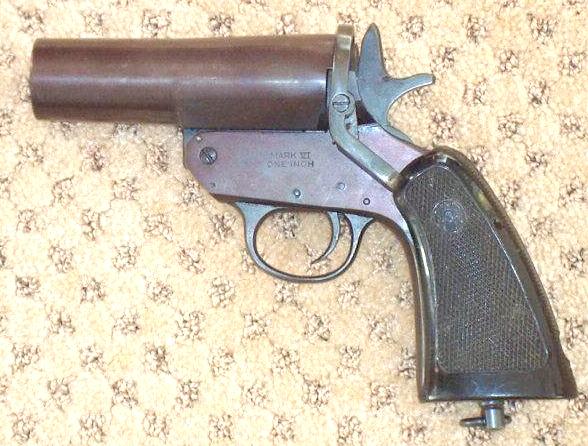
H&R built flare guns during World War I.
In the 1920s and 1930s, they made 54,000 short shotguns with short barrels called "Handy Guns," which became outlawed and illegal under the National Firearms Act of 1934. A total of 54,000 "Handy Guns" were produced from 1921 untill 1934. They were in 410 bore and 28 gauge. Some of the 410 bore were choked, but none of the 28 gauge. All of the 410 bore had 2 1/2 inch chambers except for the last 2,000 made, which had a 3 inch chamber.
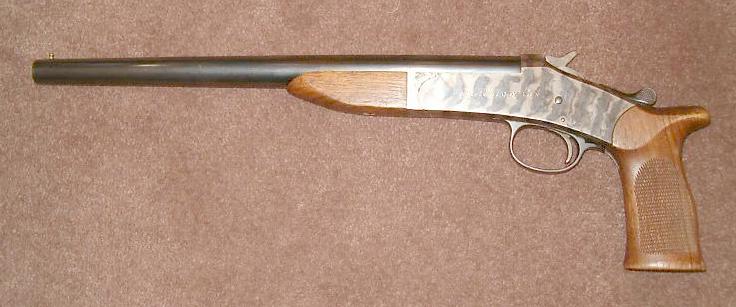
Example of a "Handy Gun" made by H&R Inc.
They made handcuffs in the 1930s, which were sent by the USA to the Chinese government to assist in its civil war with communist forces. During WW2 H&R manufactured the M1 Garand (Ordnance Department records indicate Harrington & Richardson delivered 428,600 M1 rifles) and the Reising submachine gun. In the 1950s H&R became the largest producer of M14 rifles, and also manufactured M16A1 rifles during the Viet Nam War.

This is a photo of an M1 Garand Rifle. (Highly admired by General Patton.)
In 1991 H & R 1871, LLC was formed. It is an entirely different company, and was bought by Marlin Firearms in 2000. Neither Marlin nor H & R 1871, LLC is responsible for the warranties or safety of older H & R firearms, so don't try sending your old revolver there for repairs! Marketing its products under the brand names of Harrington & Richardson and New England Firearms, H&R 1871, LLC is currently the largest manufacturer of single shot shotguns and rifles in the world.
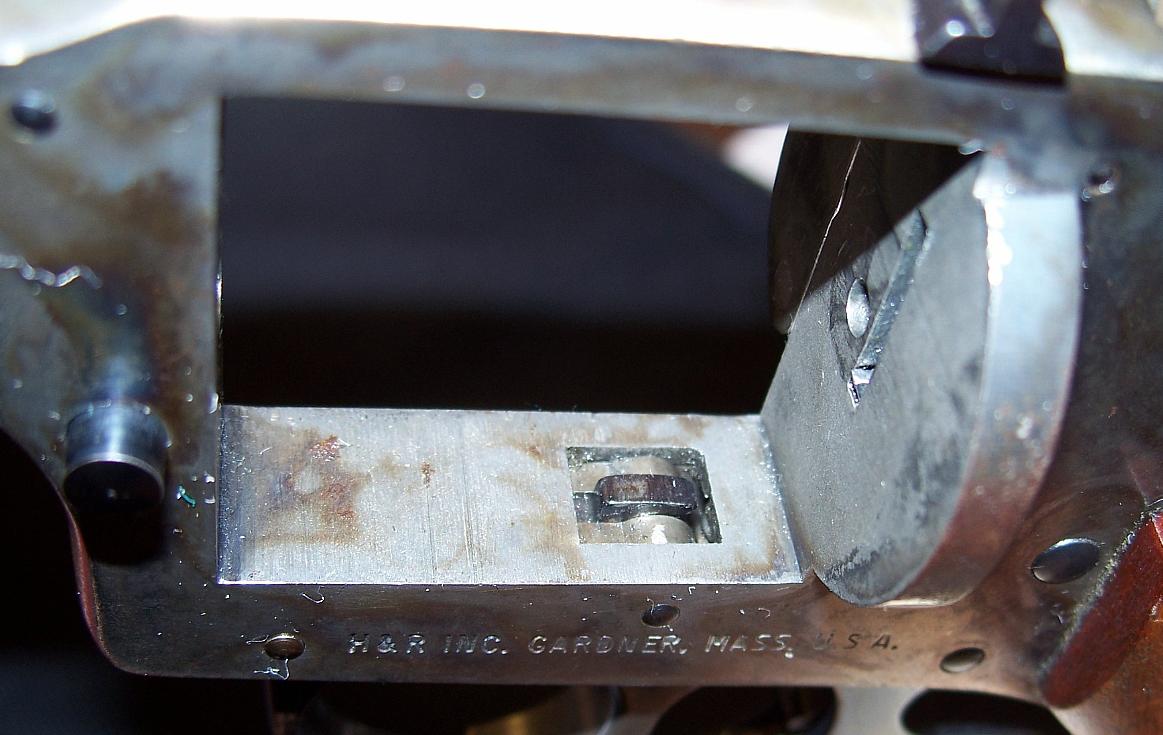
The rectangular piece of steel in the base of the frame rises up to meet one of the cylinder notches,
to stop the rotation of the cylinder, and to properly align each chamber with the barrel.
My Harrington & Richardson H&R model 676 is both a double-action revolver, but it can also be shot single-action. It comes with two six-round cylinders, one for .22lr, and the other for .22wmr. The cylinders have a "medium" amount of surface rust, however the chambers are clean and smooth, and they do not exhibit any marks of being dry-fired.
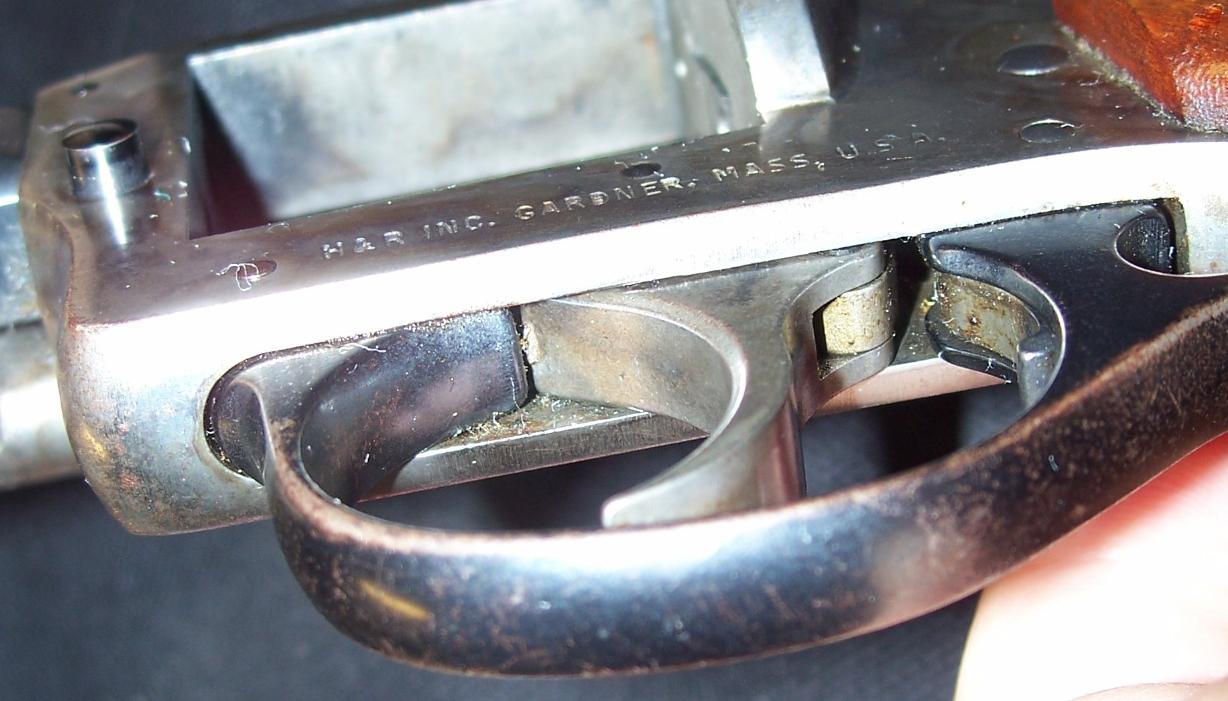
You should not dry-fire any .22 caliber rim-fire weapon, because if you do the firing pin will strike the edge of the chamber, instead of the brass rim of the cartridge. You will end up with indentations or burrs on the edges of your chambers, which may hinder the function of your firearm. You may also possibly break the firing pin. It is meant to strike soft brass, not hard steel.
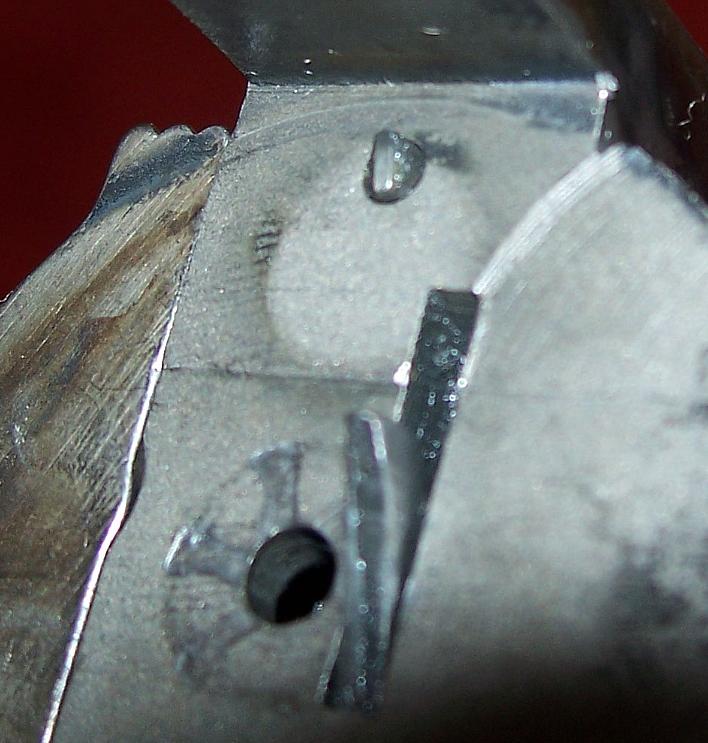
You can see the small firing pin sticking out at the top of the picture.
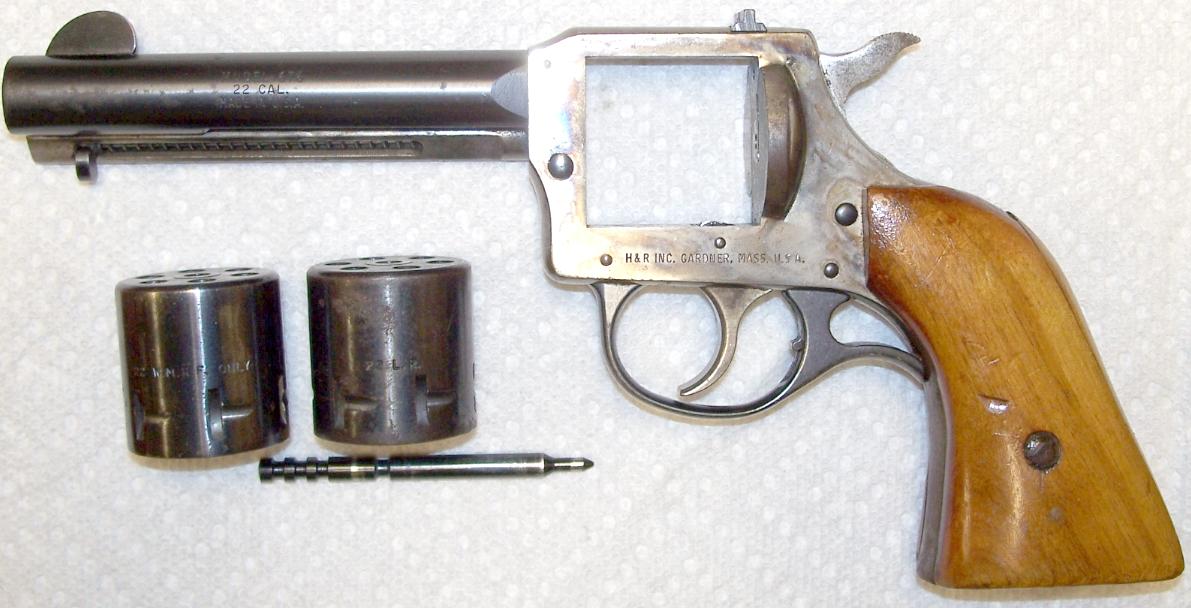
Here you see both cylinders, and the cylinder pin on which they spin.
The rear sight is drift adjustable for windage. The front sight is a plain old rounded blade. Interestingly, depending on the light, the sight picture can almost like like a modern white dot.

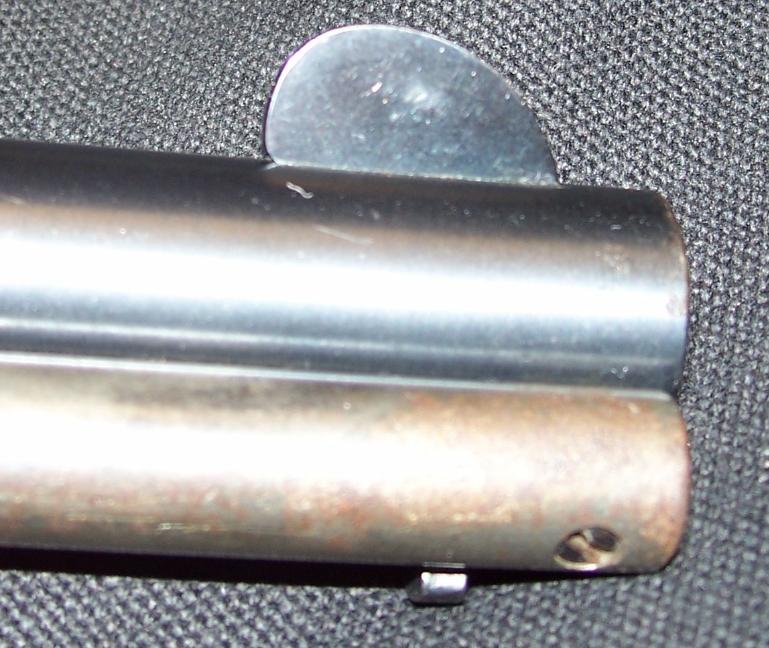
My 676 weighs 31 ounces on my postal scale. The overall length is just under ten inches. The barrel on my revolver is 4.5 inches long, the shortest barrel available on the 676. Other barrel lengths were 5.5, 7.5, 10 and 12 inches There is a slight amount of surface rust on the barrel, but the inside of the barrel is clean and well-rifled. The frame and ejector housing have been "case-hardened," and have a mottled silver/blue appearance. The ejector spring housing has more discoloration. The model number is stamped on the barrel.

My H&R 676 with the one-piece stock (grip) removed.


Ejector Spring

The cylinder lock-up is tight on my H&R 676, and the mechanism functions as it should. The trigger is wide and smooth, the hammer is serrated, and the cylinders may be loaded via a swing-out side gate. Note the little lever behind the trigger. This is the safety which must be pressed by the trigger, before the gun can fire. CORRECTION BY JAMESJO FROM THE HIGH ROAD FORUM: "The lever behind the trigger is not actually a safety per se. It is what is called the single action sear. H&R double action revolvers were actually 2 separate actions, so if one failed the other action would still work. The little lever behind the trigger is what actuated the hammer to fall in SINGLE action mode." Thank you JamesJo!!
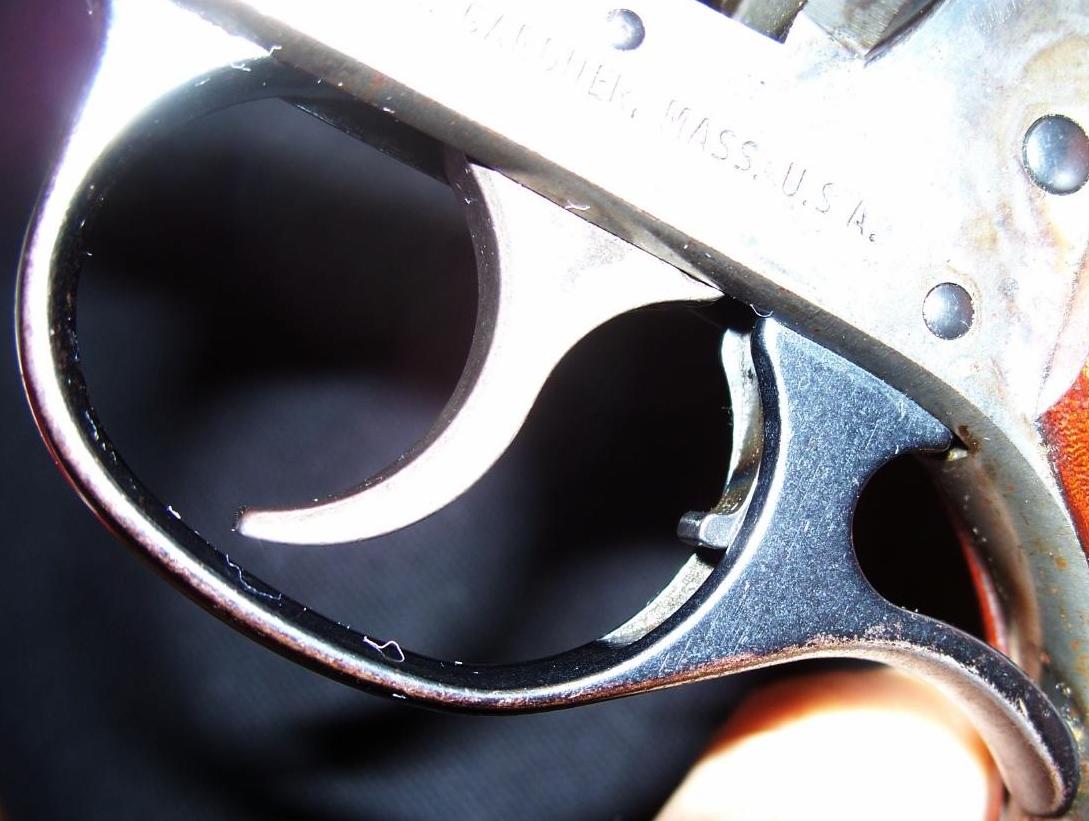
I estimate the double-action trigger to fire at about twelve pounds pull, and the single action at three or four pounds. It is not mushy, and it breaks suddenly. It's really a very nice trigger. In 1976, this gun would have sold for about $75.00, and they used to be available in hardware stores, auto-parts stores, etc., as well as gun stores. "Blue Book" values for H&R revolvers are quite low. For example, the 27th Edition of 2006 (which I have), lists the H&R 676 in 100% condition as selling for $140. (Other H&R models book for as low as $85 in 100% condition.) However, gun prices have increased greatly in the past several years, and $140 NOW (2009) would represent a terrific bargain, in my opinion. I have seen the 676 model listed for as much as $325 (in "like new" condition) at GunBroker.Com. My own 676 shows a bit of rust and wear, and a crack in the stock, but I didn't mind paying $200 for it (August 2009).
There is a little transfer bar between the hammer and the firing pin, connected to a lever just behind the trigger. The hammer will drop most of the way by itself, but until that little lever is pressed by the trigger the hammer won't drop all the way, and the gun won't fire. The lever raises the firing bar up between the hammer and firing pin to allow the firing pin to be struck. ADDITION BY JAMESJO FROM THE HIGH ROAD FORUM: "The lever behind the trigger is not actually a safety per se. It is what is called the single action sear. H&R double action revolvers were actually 2 separate actions, so if one failed the other action would still work. The little lever behind the trigger is what actuated the hammer to fall in SINGLE action mode." Thank you JamesJo!!

The serial number of my H&R revolver is AR37697. After 1940 letter codes were used to denote year of manufacture. starting with A in 1940 and going to BC in 1986. H&R used the AR letter codes in 1977 (information from the "Blue Book").


At the range I shot some CCI Mini-mag .22lr ammo, and some CCI Maxi-mag ammo from the WMR cylinder. I was shooting at simple targets on 8.5x11 paper, at 20 yards, standing off-hand, and was able to keep all shots on the paper. I have not yet had an opportunity to shoot sitting at a rest. Recoil was very low from both kinds of ammo. The .22lr made a pleasant little "crack" sound, but the magnum ammo was much louder!
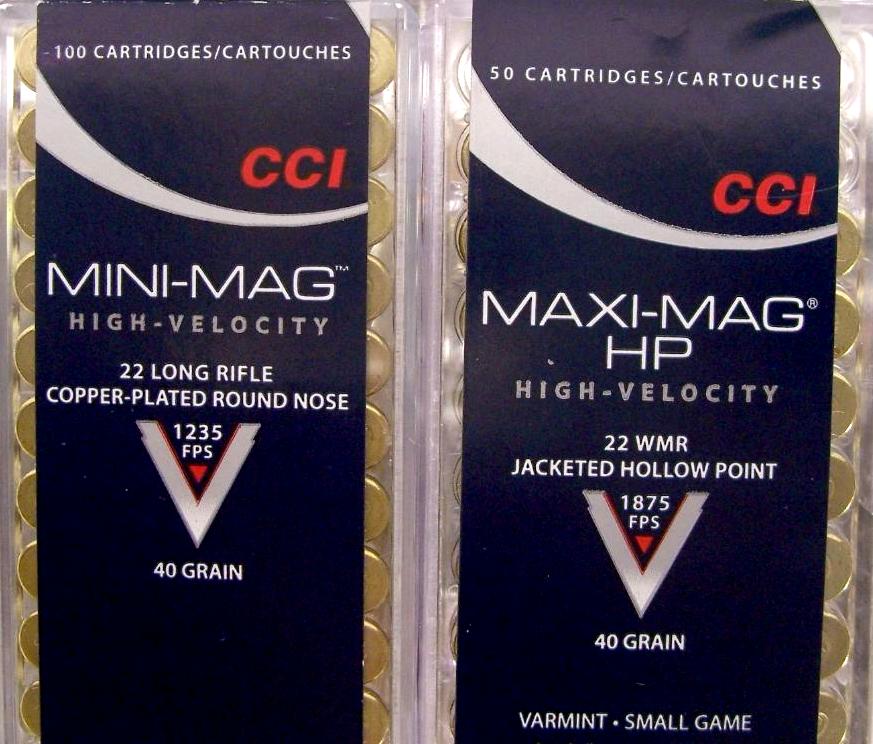
My test ammo
